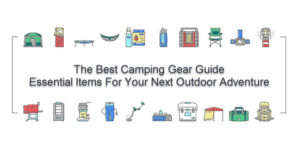Building your own first aid kit can be an essential step towards ensuring that you are prepared in case of any medical emergencies. It is crucial to have all the necessary items at hand, as they could save lives and prevent further complications from arising. Here’s how you can build a comprehensive first aid kit for home use:

Essential Items for a First Aid Kit
Bandages (various sizes)
Sterile gauze pads
Adhesive tape
Antiseptic wipes or solution
Tweezers
Scissors
Disposable gloves
Instant cold pack
Emergency blanket
CPR mouth barrier mask
Antihistamine tablets
Pain relievers such as acetaminophen or ibuprofen
Antiemetic medication for nausea and vomiting
Types of Injuries and their Treatment
A first aid kit should contain supplies needed to treat various types of injuries. Some common ones include cuts, burns, sprains, fractures, and head injuries. For instance, if someone suffers a deep cut, it would require cleaning with soap and water followed by stitches or sutures. Burns need immediate cooling using running water before seeking medical attention. Sprained ankles may benefit from elevating the foot above heart level while applying ice on the affected area. Fractured bones usually require immobilization through splinting until professional help arrives. Head injuries may involve concussion symptoms like dizziness, confusion, or loss of consciousness; seek urgent medical care even if there seems to be no visible injury.
Personalizing Your First Aid Kit
It’s essential to personalize your first aid kit based on individual needs and family history. Consider adding extra supplies depending on factors such as age, health conditions, and lifestyle activities. For example, people who suffer from asthma attacks might require additional rescue inhaler. Similarly, those living in areas prone to natural disasters may want to add more survival gear like food and water rations.
Maintenance and Replacement of your First Aid Kit
To ensure that your first aid kit remains effective, regularly check its contents and replace expired drugs or outdated equipment. The American Red Cross recommends reviewing and restocking your kit every six months. Additionally, keep your first aid kit in an easily accessible location and away from extreme temperatures or moisture. Finally, consider taking a first aid course to learn basic life support skills and techniques.
In conclusion, building a comprehensive first aid kit for home use requires careful planning and consideration of potential risks. By following these guidelines, you will be better equipped to handle medical emergencies when they arise.

